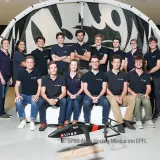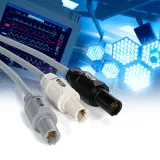Secret conversations

Invisible to the eye and clear to hear, discreet communication is used by police forces around the world. A niche market where Phonak Communications has brought 30 years of know-how combined with the resources of the Sonova group.
Blurred or disrupted vocal communication is always annoying. But when it affects an undercover policeman, it can have dramatic consequences. It is out of the question to lose contact when the agent is following his suspect across a lively bar or on public transport. A discreet communication system must be able to pass through both sound and magnetic disturbance. Roger Covert C, designed by Phonak Communications, provides a solution.
With this cutting-edge system, the policeman can leave his too obvious mobile phone (or radio) at the bottom of his pocket. The device is linked to the main unit Roger Covert C by Bluetooth or by cable, the audio signal, secured by 128-bit encryption, is transmitted wirelessly to the invisible earpiece. Crammed with miniaturised technologies, the earpiece includes an amplifier, a processor as well as a zinc-air battery, offering 20 hours of autonomy. When the policeman wants to talk, he uses a small PTT (push-to-talk) remote control. Clipped on the inside of his jacket, a minimalist microphone picks up his voice, that the main unit transmits to the phone (or the radio).
At the heart of the system, there is Roger, a proprietary digital communication protocol designed by Phonak Communications in early 2010, more robust and energy-saving than public protocols like Bluetooth. Above all, points out Florian Bachmann, Product Manager, it makes it possible to do without an inductive loop. “ By the way, Roger Covert C is the only discreet communication system without an inductive loop. ”
Precision is important. This loop, materialised by a “ necklace ” around the wearer’s head, is used for sending the signal to an analogue wireless earpiece. It is not only uncomfortable, but also extremely sensitive to electromagnetic disturbance. “ In an urban environment, the signal can be seriously disturbed by “ electrosmog ” and become unstable. Roger Covert C is not subject to such disturbance. ”
As for “ Noise cancelling ”, it starts with sound recording via a microphone which is actually composed of two microphones. “ This makes it directional and contributes to signal processing ”, explains Florian Bachmann. “ It is possible to separate speech (getting first to the microphone closer to the mouth) from ambient noise (that gets to both microphones at the same time). ” Signal processing – another area of expertise for which Phonak has become known - is intense : no fewer than seven different algorithms work on isolating the voice from its sound environment.
The result, according to Phonak, is the exact opposite of the crackling radio contacts of detective films. “ You can hear the voice perfectly clearly. Even if the speaker is in a very noisy environment, even if he whispers, even if he can’t hear himself speak ! ” During a conversation with several people, communication is so clear that it is possible to recognise each person’s voice, “ which is impossible with inductive systems. ”
Designing such technologies requires a solid experience in wireless solutions as well as significant resources (developing Roger alone cost dozens of millions of dollars). Phonak Communications can benefit from both.
The Swiss company was created in 1992 and over half of the staff of 120 are engineers. Its headquarters are in Morat (or Murten in Swiss German), at the heart of an area which has become a global reference in the field of microtechnologies. The name of the brand new building they have recently moved in – Sonova Wireless Competence Center – is a perfect reflexion of their role : a competence centre of the Sonova Group (ex Phonak, since 1947), a global leader in solutions for hearing-impaired people, which now achieves almost 3 billion in turnover.
The solutions designed in Morat are used by all the group companies. They are adapted to meet the great variety of requirements of potential markets.
The Roger system, for instance, was originally developed to help hearing-impaired school children. The aim was to create a communication protocol which is fast enough, clear and easy-to-use, so that children can hear their teachers perfectly against the usual classroom racket.
Roger was then integrated into a multitude of products for “ communication in difficult environments ”. Products adapted for TV presenters, politicians… Roger Covert C is only one of the “ Security ” products, a range also including solutions for rapid intervention brigades or the motorcycle police. So many niche markets that, if alone, would not have benefited from such important resources.


